Even more than your camera, your lens is the most important piece of gear in the craft of photography. Through the specific angle of view and depth of field characteristics that each type offers, your lens is the device that directly translates your vision of the world into an image. In the end, it’s not the body that determines the quality and look of your photograph, it’s the lens.
Buying a new lens is certainly an exciting event, but with so many choices on the market, it can be a daunting process. There are a number of factors that play into your decision, including budget, size, weight and your own photography style. As you do your own evaluative research and ask yourself which lens you should buy, which lens will be the right one for your own brand of image making, it can sometimes help to see what lenses other photographers find useful.
With that in mind, here’s a current list of the five most popular Nikon lenses and why I think you might consider each one if you’re in the market for some new glass.
1. AF-S 50mm f/1.8G
Every photographer should have a 50mm lens. It’s the lens that most people start out with, at least they used to before kit zoom lenses became standard equipment with new camera bodies.
A 50mm lens is a highly versatile tool that will carry you through your entire photography life, and Nikon’s latest generation of this lens, the AF-S 50mm f/1.8G is a superb choice. It’s light, fast, sharp, has very shallow depth of field up close, and with the Silent Waver Motor, it focuses with incredible speed and accuracy.
Portraits, nature, travel, still life, street photography, the 50mm will do it all. Note, it’s not the best sports lens, unless you’re able to get close enough to the action.
[iframe]<iframe src=”http:///e/cm?lt1=_blank&bc1=000000&IS2=1&bg1=FFFFFF&fc1=000000&lc1=0000FF&t=danhbaisadvph-20&o=1&p=8&l=as4&m=amazon&f=ifr&ref=ss_til&asins=B004Y1AYAC” style=”width:120px;height:240px;” scrolling=”no” marginwidth=”0″ marginheight=”0″ frameborder=”0″></iframe><iframe width=”120″ scrolling=”no” height=”240″ frameborder=”0″ style=”border:none;” border=”0″ src=”http://mer54715.datafeedfile.com/widget/aff_widget_prdt_generate-2.0.php?aff_num=6746&aff_net=1&widget_num=1571″ marginheight=”0″ marginwidth=”0″></iframe>[/iframe]
2. AF-S 35mm f/1.8G DX
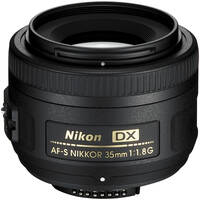 Engineered as a DX lens, the Nikon AF-S 35mm f/1.8G lens functions as a normal, fast 50mm f/1.8 lens on the 1.5x crop sensor DX camera bodies.
Engineered as a DX lens, the Nikon AF-S 35mm f/1.8G lens functions as a normal, fast 50mm f/1.8 lens on the 1.5x crop sensor DX camera bodies.
Everything I said above about the 50mm lens above applies here if you have a DX camera. It’s fast, sharp and also has the Silent Wave internal focusing motor. If you have a D90, D7000, D5000, D3100, D3200 or one of the other non-full frame Nikon DLSRs, then this is a must have lens.
If you have a full frame sensor and are looking for a 35mm lens, you’ll want the older 35mm f/2D lens, as this DX version will give you light falloff on a non-DX body.
[iframe]<iframe src=”http:///e/cm?lt1=_blank&bc1=000000&IS2=1&bg1=FFFFFF&fc1=000000&lc1=0000FF&t=danhbaisadvph-20&o=1&p=8&l=as4&m=amazon&f=ifr&ref=ss_til&asins=B001S2PPT0″ style=”width:120px;height:240px;” scrolling=”no” marginwidth=”0″ marginheight=”0″ frameborder=”0″></iframe><iframe width=”120″ scrolling=”no” height=”240″ frameborder=”0″ style=”border:none;” border=”0″ src=”http://mer54715.datafeedfile.com/widget/aff_widget_prdt_generate-2.0.php?aff_num=6746&aff_net=1&widget_num=1572″ marginheight=”0″ marginwidth=”0″></iframe>[/iframe]
3. AF-S 18-300mm f/3.5-5.6G ED VR DX
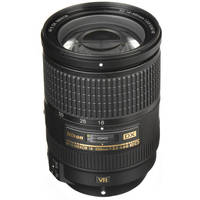 Considered by many users to by a great all-in-one lens for DX sensor Nikon DLSRs, the AF-S 18-300mm f/3.5-5.6G ED VR gives you an affordable and lightweight option for full coverage across the entire spectrum of view. From wide angle the way to high power telephoto, this lens gives you the equivalent of a 450mm lens and lets you bring the subject up close. Very close.
Considered by many users to by a great all-in-one lens for DX sensor Nikon DLSRs, the AF-S 18-300mm f/3.5-5.6G ED VR gives you an affordable and lightweight option for full coverage across the entire spectrum of view. From wide angle the way to high power telephoto, this lens gives you the equivalent of a 450mm lens and lets you bring the subject up close. Very close.
Built with Nikon’s second generation VRII vibration reduction technology, Silent Wave internal autofocusing, extra low dispersion and aspherical glass elements and Nikon’s Super Integrated Coating, this lens gives consistently sharp results for the price. It will even allow close focusing of up to 1.4 feet at the 300mm setting.
Granted, with a maximum aperture of f/5.6 when zoomed all the the way out, it’s not as fast as more expensive f/2.8 lenses. However, it’s certainly smaller and less expensive. And with today’s high ISO capable cameras, lens speed is not as much of an issue than it was back when we were shooting 50 and 100 speed slide film. These days, f/5.6 is not the end of the world. In fact, the featured shot on my Facebook Page was shot with long lens at f/5.6.
Want a convenient compact do-it-all lens that weighs less than 2 lbs? This might be your choice.
[iframe]<iframe src=”http:///e/cm?lt1=_blank&bc1=000000&IS2=1&bg1=FFFFFF&fc1=000000&lc1=0000FF&t=danhbaisadvph-20&o=1&p=8&l=as4&m=amazon&f=ifr&ref=ss_til&asins=B008B14VAK” style=”width:120px;height:240px;” scrolling=”no” marginwidth=”0″ marginheight=”0″ frameborder=”0″></iframe><iframe width=”120″ scrolling=”no” height=”240″ frameborder=”0″ style=”border:none;” border=”0″ src=”http://mer54715.datafeedfile.com/widget/aff_widget_prdt_generate-2.0.php?aff_num=6746&aff_net=1&widget_num=1573″ marginheight=”0″ marginwidth=”0″></iframe>[/iframe]
4. AF-S 24-70mm f/2.8G ED
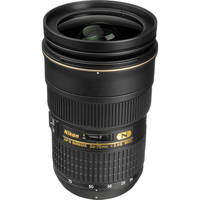 The AF-S 24-70mm f/2.8G ED is the workhorse lens of pro photographers like Joe McNally, Lucas Gilman and David Hobby. Optimized for both DX and FX full frame Nikon cameras, this is top quality glass.
The AF-S 24-70mm f/2.8G ED is the workhorse lens of pro photographers like Joe McNally, Lucas Gilman and David Hobby. Optimized for both DX and FX full frame Nikon cameras, this is top quality glass.
It’s not a small, compact or lightweight lens by any means, but it will get the job done. It’s the ultimate lens for photographers who love the look and feel of mid range primes, but want the simplicity and convenience of carrying a single lens instead of three or four.
With a fast f/2.8 aperture all the way through, ED glass, AF-S focusing and Nikon’s Nano Crystal Coat, this lens has fantastic edge to edge sharpness, exceptional contrast and color and it will produce outstanding images. Built to rugged pro-grade standards with dust and moisture resistance, it will perform in all conditions.
Landscapes, travel, professional quality portraits with amazing looking bokeh, events, photojournalism, street photography, the 24-70mm lives up the hype for one reason- it’s an all out five star lens.
[iframe]<iframe src=”http:///e/cm?lt1=_blank&bc1=000000&IS2=1&bg1=FFFFFF&fc1=000000&lc1=0000FF&t=danhbaisadvph-20&o=1&p=8&l=as4&m=amazon&f=ifr&ref=ss_til&asins=B000VDCT3C” style=”width:120px;height:240px;” scrolling=”no” marginwidth=”0″ marginheight=”0″ frameborder=”0″></iframe><iframe width=”120″ scrolling=”no” height=”240″ frameborder=”0″ style=”border:none;” border=”0″ src=”http://mer54715.datafeedfile.com/widget/aff_widget_prdt_generate-2.0.php?aff_num=6746&aff_net=1&widget_num=1574″ marginheight=”0″ marginwidth=”0″></iframe>[/iframe]
5. AF-S 70-200mm f/2.8G ED VR II
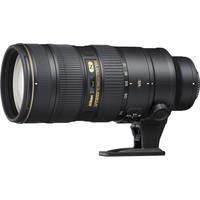 If you shoot sports and action, this is the one. Period. The end. If you can afford it, definitely get this lens, or one like it.
If you shoot sports and action, this is the one. Period. The end. If you can afford it, definitely get this lens, or one like it.
The Nikon AF-S 70-200 f/2.8G ED VR II is the absolute standard telephoto zoom lens for shooting professional quality sports, or any subject that requires distance between the photographer and subject.
Built to pro specs with incredibly fast AF-S internal focusing, superior ED glass and vibration reduction that lets you shoot up to 4 stops faster in lower light conditions, this lens gives brilliantly sharp, high contrast images with reduced ghosting and flare. It works equally well on both DX and FX bodies.
I have a lens in this range and it’s been my own go-to glass throughout my entire photography career. I use it for action, portraits, landscapes, travel, just about everything. For what I do, I simply could not live without this type of lens and this model is the best one that Nikon has ever made. Read the reviews. You’ll see. King of the zooms. No need to say any more.
Edit: Nikon recently came out with the brand new Nikon AF-S 70-200mm f/4G ED VR Telephoto Zoom Lens. It’s a full-on pro quality zoom lens with an even more advanced VR system than the 70-200mm f/2.8 version has. I highly recommend this lens, because it’s got excellent optics and it costs about a thousand dollars less than the f/2.8 version. Read my comparison review between these two lenses and see some example images.
[iframe]<iframe src=”http:///e/cm?lt1=_blank&bc1=000000&IS2=1&bg1=FFFFFF&fc1=000000&lc1=0000FF&t=danhbaisadvph-20&o=1&p=8&l=as4&m=amazon&f=ifr&ref=ss_til&asins=B002JCSV8U” style=”width:120px;height:240px;” scrolling=”no” marginwidth=”0″ marginheight=”0″ frameborder=”0″></iframe><iframe width=”120″ scrolling=”no” height=”240″ frameborder=”0″ style=”border:none;” border=”0″ src=”http://mer54715.datafeedfile.com/widget/aff_widget_prdt_generate-2.0.php?aff_num=6746&aff_net=1&widget_num=1575″ marginheight=”0″ marginwidth=”0″></iframe><iframe width=”120″ scrolling=”no” height=”240″ frameborder=”0″ style=”border:none;” border=”0″ src=”http://mer54715.datafeedfile.com/widget/aff_widget_prdt_generate-2.0.php?aff_num=6746&aff_net=1&widget_num=3354″ marginheight=”0″ marginwidth=”0″></iframe><iframe src=”http:///e/cm?lt1=_blank&bc1=000000&IS2=1&bg1=FFFFFF&fc1=000000&lc1=0000FF&t=danhbaisadvph-20&o=1&p=8&l=as4&m=amazon&f=ifr&ref=ss_til&asins=B009VZOK0Q” style=”width:120px;height:240px;” scrolling=”no” marginwidth=”0″ marginheight=”0″ frameborder=”0″></iframe>[/iframe]
Support this site: If do find yourself in the market for new glass, please consider purchasing gear through these links. It doesn’t cost you anything extra but it helps cover the costs, effort and time that it takes to run this site and produce these articles. As always, thanks for reading!

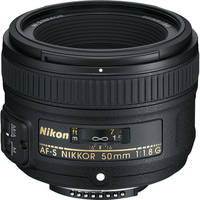
Thanks for the advice!
We have also published a post lately about learning to see through the different lenses out there 🙂
You mention the 50mm f/1.8G and I’m sure it’s a great lens at a great price. For folks keen to step up to the f/1.4, though, I would encourage them to take a look at the 50mm f/1.4D rather than going straight to the G version of that lens. The D is older but, on cameras that support it (not all the low end Nikon DSLR bodies support D lenses these days) I’ve found that it focuses quicker than the G version and costs about $100 less.